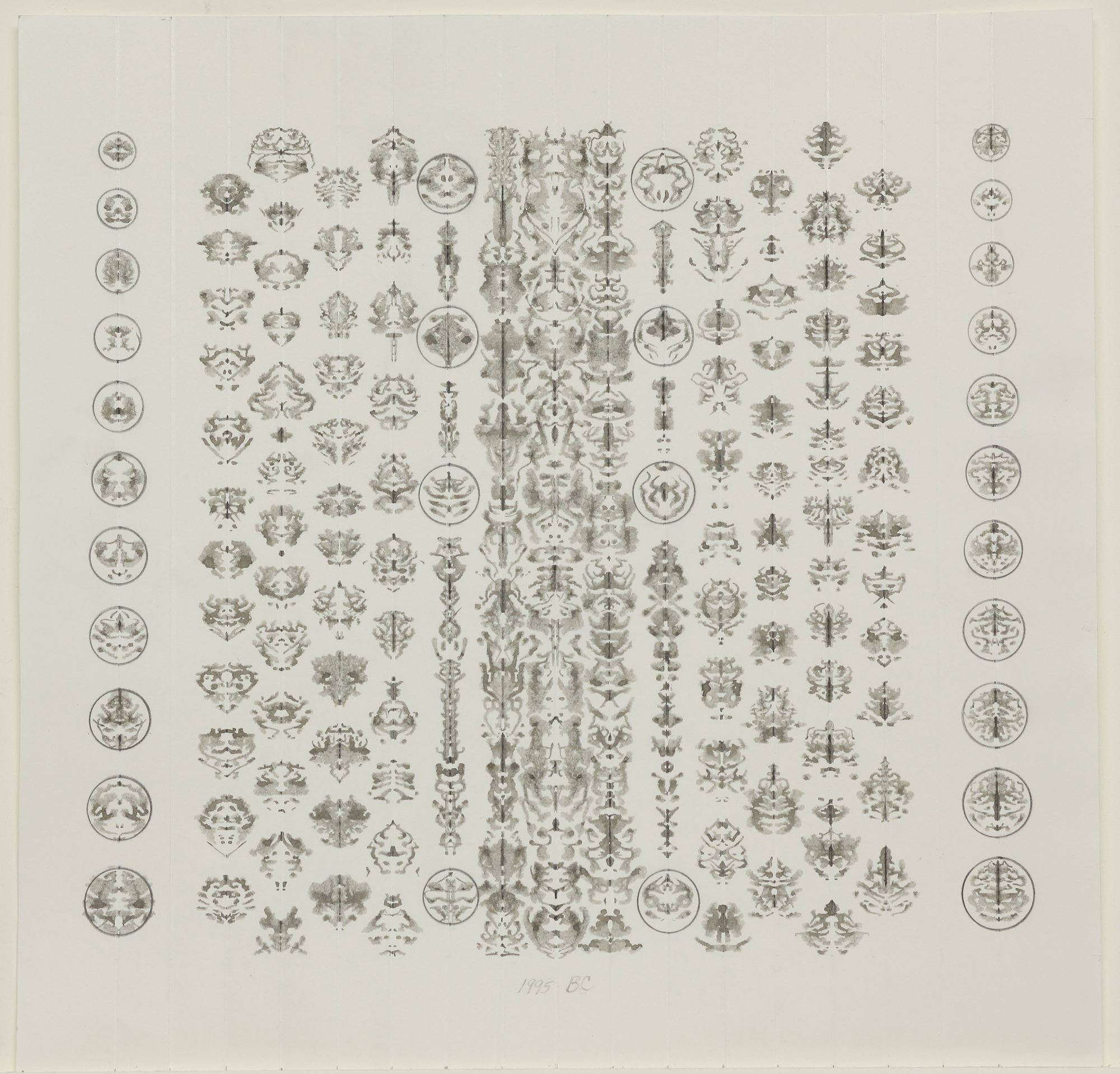
© » KADIST
Scott Reeder
Reeder’s works often start with language—and his Pasta Paintings are no different. After the phrase for the title came through his head, the artist set about trying to figure out how to make a mark with pasta. These paintings are the result, made using the pasta as something of a stencil, with the paint being applied after the noodles have been scattered on the painting’s blank surface.

© » KADIST
Bruce Conner
In 1977, as an already-established artist best known for his films, Bruce Conner began to photograph punk rock shows at Mabuhay Gardens, a San Francisco club and music venue. 27 Punk Photos: 11. Dim Wanker: F Word, May, 1978 (1978) is representative of a series of photographs by Conner, whose subject became a fascination for the artist.

© » KADIST
Bruce Conner
Unlike many of his earlier films which often present poignant critiques of mass media and its deleterious effects on American culture, EASTER MORNING , Conner’s final video work before his death in 2008, constitutes a far more meditative filmic essay in which a limited amount of images turn into compelling, almost hypnotic visual experience. The video presents us with a reinterpretation of footage from his unreleased avant-garde film, Easter Morning Raga , from 1966. In contrast to his more famous pieces like A Movie (1958) and Crossroads (1976) which are juxtapositions of fragments from newsreels, soft-core pornography, and B movies, the images in EASTER MORNING serve as a reinterpretation of footage.

© » KADIST
Bruce Conner
Drawing & Print (Drawing & Print)
Bruce Conner is best known for his experimental films, but throughout his career he also worked with pen, ink, and paper to create drawings ranging from psychedelic patterns to repetitious inkblot compositions. Untitled Inkblot Drawing (CT-1491) (1995) is representative of his aspect of his practice. It is a formal exploration related to many different things: the Rorschach inkblot testing used by psychologists, Japanese calligraphy, Egyptian hieroglyphs, and the intricate patterning Conner saw everywhere in the world around him.
Bruce Conner
- location: San Francisco, California
- year born: 1933
- gender: male
- nationality: American
- home town: McPherson, Kansas
Scott Reeder
- location: Chicago, Illinois; Raleigh, NC
- year born: 1970
- gender: male
- nationality: American
- home town: Milwaukee, Wisconsin
Nathan Mabry
- location: Los Angeles, California
- year born: 1978
- gender: male
- nationality: American
- home town: Durango, Colorado
-
1970-1979
Bruce Conner
1978In 1977, as an already-established artist best known for his films, Bruce Conner began to photograph punk rock shows at Mabuhay Gardens, a San Francisco club and music venue...
-
1990-1999
Bruce Conner
Drawing & Print
1995(Drawing & Print) Bruce Conner is best known for his experimental films, but throughout his career he also worked with pen, ink, and paper to create drawings ranging from psychedelic patterns to repetitious inkblot compositions...
-
2000-2009
Bruce Conner
2008Unlike many of his earlier films which often present poignant critiques of mass media and its deleterious effects on American culture, EASTER MORNING , Conner’s final video work before his death in 2008, constitutes a far more meditative filmic essay in which a limited amount of images turn into compelling, almost hypnotic visual experience...
-
2010-2019
Scott Reeder
2013Reeder’s works often start with language—and his Pasta Paintings are no different...
